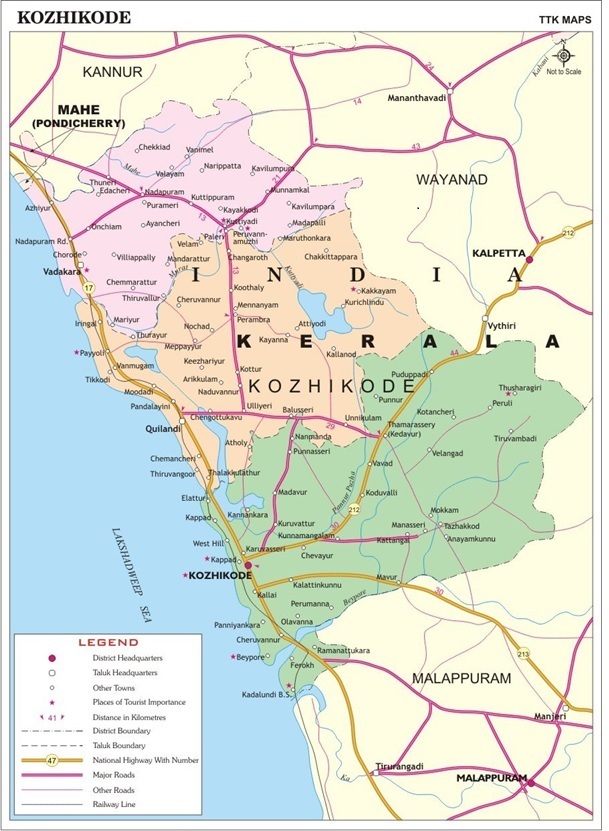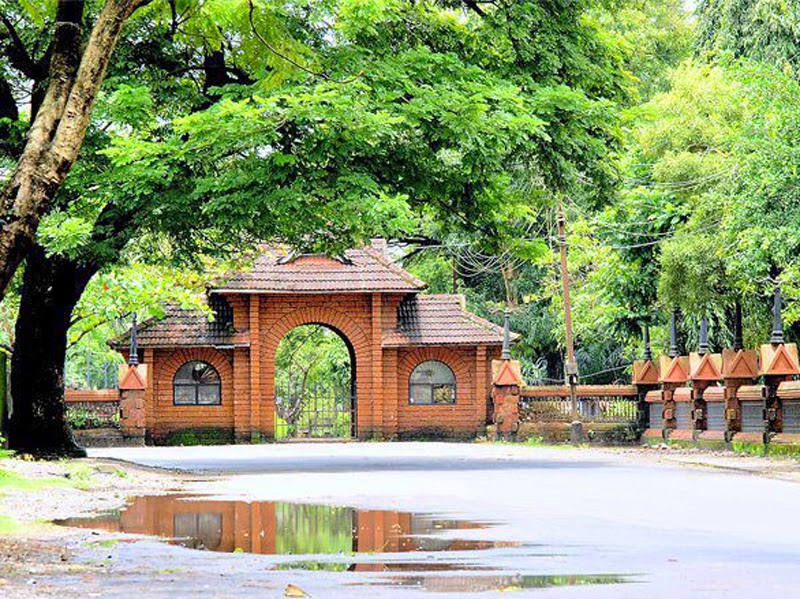HISTORY
Kozhikode District.... Once the capital of the powerful Zamorins and a prominent trade and commerce Centre, Kozhikode was the most important region of Malabar in the days gone by. Today, lush green countryside, serene beaches, historic sites, wildlife sanctuaries, rivers, hills, a unique culture and a warm, friendly ambience make Kozhikode a popular destination. Kozhikode District found a place in the World History with the discovery of Sea Route to India in 1498 by the Portuguese Navigator Vasco Da Gama. Kozhikode is a historical town with a hoary past. From time immemorial, the city attracted travellers, with its charming physical features and prosperity.


ADMINISTRATION
The district comprises of four taluks viz. Kozhikode, Vatakara, Koilandy and Thamarassery which are subdivided into 118 revenue villages. The district is also divided into 12 Blocks Panchayats and 71 Grama Panchayats. The headquarters of the district namely, Kozhikode City is one among the five city corporations of the state. There are 7 municipalities in the district. There are 13 assembly constituencies and 3 Parliament constituencies.
TOPOGRAPHY
Kozhikode district is situated on the south west coast of India. The district is bounded on the north by Kannur district, on the east by Waynad district, on the south by Malappuram district and on the west by the Arabian Sea.
Topographically the district has three distinct regions - the sandy, the rocky highlands formed by the hilly portion of the Western Ghats and lateritic midland. Of the total area of 2344 sq.kms, the sandy coastal belt is 362.85 sq.kms, lateritic midlands is 1343.50 sq.kms and rocky highlands 637.65 sq.kms.
All the Four taluks are spread over the three regions. The district has a coastal length of about 80 Kms. The highland region accounts for 26.80 per cent and the lowland region for 15.55 per cent of the total area of the district.
CLIMATE
The district has a generally humid climate with a very hot season extending from March to May. The rainy season is during the South West Monsoon, which sets in the first week of June and extends up to September. The North East Monsoon extends from the second half of October through November. The average annual rainfall is 3266 mm. The best weather is found in towards the end of the year, in December and January — the skies are clear, and the air is crisp. The highest maximum temperature recorded at Kozhikode was 39.4 0 C during the month of March 1975 and lowest temperature was 14 0 C recorded on 26th December 1975. Humidity is very high in the coastal region. The average rainfall is 3603.9 mm.
MSMEs started during the Period 2011-16

